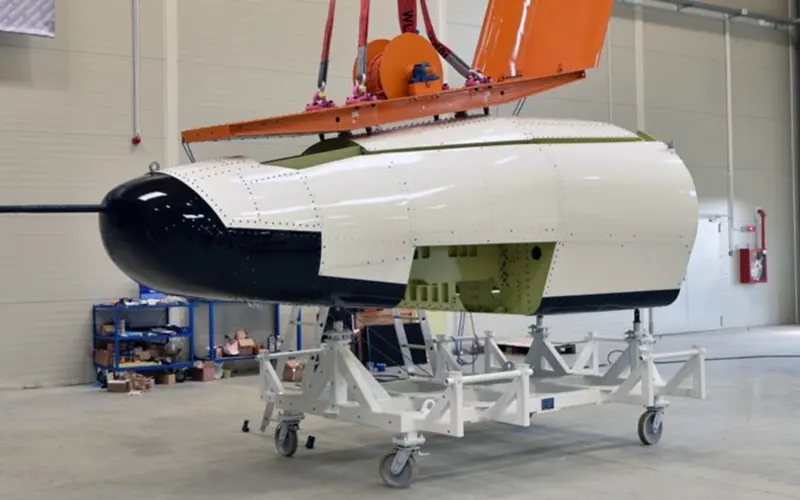 Credit: INCAS
Credit: INCASRomania’s National Institute for Aerospace Research ‘Elie Carafoli’ (INCAS) has delivered the Space Rider Descent and Landing Test Model (DLRM) to the Italian Aerospace Research Centre (CIRA) in Capua.
CIRA was contracted by the Space Rider Re-entry Module prime contractor, Thales Alenia Space, in late 2021 to oversee a series of drop tests aimed at validating the vehicle’s recovery system. INCAS, working under CIRA’s coordination, was selected to design and manufacture a test model of the Re-entry Module that simulates its size, mass, aerodynamic shape, and landing gear for the final set of drop tests.
On 19 September, INCAS announced that it had completed a series of tests to validate the test model’s structure. On 14 October, the institute announced that it had successfully delivered the DLRM from its facility in Bucharest, Romania, to CIRA’s facility in Capua, where final integration operations will occur.
According to a 30 September CIRA update, the DLRM will now be equipped with its avionic subsystem, onboard software, and the various elements of its recovery system, including the landing gear and parafoil. Once complete, the fully integrated DLRM will be shipped to the Salto di Quirra testing range in Sardinia.
The DLRM will then be strapped to a CH-47 Chinook helicopter and dropped from a range of altitudes, after which it will deploy its parafoil and autonomously guide itself to a designated landing zone. This final series of drop tests will be used to validate the vehicle’s recovery under worst-case touchdown scenarios, ensuring that any payloads on board are not subjected to excessive shock.
CIRA has already overseen two sets of drop tests using a 3,000-kilogram mass simulator. The first set, completed in August 2024, used a mass-simulator test article controlled from the ground. The second set, conducted in June 2025, involved autonomous operations.